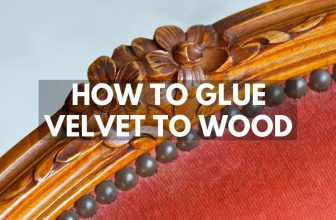
How to Glue Carpet to Stairs
The top choice for gluing carpet to stairs includes latex adhesive, polyurethane adhesive, and silicone adhesive. Any of these adhesives are optimal for adhering carpet to stairs, yet all of these have different drying times due to the conditions when they are laid down.
To best use these adhesives, the amount of time used for drying and post drying will determine which is best for the job. Some adhesives will dry faster, allowing a shorter working period. Longer curing glues can also offer better long-term adhesion in some cases.
The type of adhesive you choose depends on whether your stairs are made of concrete, or you will be gluing to wood. This article will help detail each of the steps used for individual adhesives used for this application. There are also helpful tips that will explain how to best apply each glue to have the best adhesion between carpet and stairs.
What Glue Can You Use for Carpet to Stairs?
If you fit carpet to the stairs yourself, then you may be wondering whether you need to use glue or not. We will leave that decision to you, but here is a helpful guide of the glues you can and should use:
Latex Carpet Adhesive
This adhesive is a concentrated natural latex product that has additional adhesives that are mixed into Latex adhesive for carpet. This single-component glue is about as thick as wood glue and is applied to the underside carpet and underlying surfaces to adhere to carpet sections on stairs with high foot traffic. This adhesive is primarily non-toxic, with very little preparation that is needed to apply it onto surfaces meant for stairways and carpet material.
There is very little cleanup involved with curing times that are optimal using minor effort to secure an excellent bond.
Polyurethane Adhesive
Polyurethane adhesive is a good choice where stairways that are made from concrete require a strong permanent bond between the carpet and concrete stairs. When stairs are constructed from wood, polyurethane adhesive is also optimal. However, this adhesive works better when moisture is introduced. There is some preparation involved with select conditions for curing that is needed.
The polyurethane glue that is recommended for this application would include Loctite PL Premium. Liquid Nails, which is solvent-based Polyurethane glue, does not work so well for wood surfaces but will work fine for concrete.
Silicone Adhesive
Silicone adhesive is another great choice for gluing carpet to stairs no matter what type of material is underneath the carpet. Silicone adhesive will stick to concrete and wood with very little preparation and has an excellent bond to all types of fabric material that carpet is constructed from. Silicone adhesive also helps to create a moisture barrier to prevent concrete from releasing moisture into the stairway carpet.
A good choice for silicone adhesive includes Bondit Multi-Mate Silicone Sealant or any silicone caulk that is meant to be an adhesive rather than general caulking.

How to Prepare Carpet to Stairs Before Gluing
The surface of the stairs must be swept and vacuumed to keep anything off the surface that does not belong there. Concrete stairs do not need any special prepping however wooden stairs should have light sanding with 300-grit sandpaper. This helps to have better adhesion to the wood.
Since the carpet has a woven backing, this texture will allow the adhesive to grip and set into the carpet.
Each step on the stairway must be glued separately using individual strips of carpet on the steps. To make the stairway useable while the adhesive is drying, steps can be glued on every other step.
How to Apply Glue for Carpet to Stairs
When using latex adhesive, these can be applied using a paintbrush or roller to apply onto each surface. Thicker adhesives such as polyurethane and silicone will require a plastic scraper that has notches. These notches allow adhesive to be laid onto the stairway surface which will better attach to carpet sections. It won’t hurt to add some silicone adhesive to the back of the carpet using a plastic scraper on the underside lightly.
Too much pressure of applying silicone or polyurethane adhesive to carpet could cause the adhesive to push through the fiber. Light force around the edges of the carpet piece is all that is needed. Always use gloves when applying these adhesives and ventilation if required.
How to Cure Carpet to Stairs Glue
Latex adhesive will naturally air dry within minutes and can dry faster when warm air is used including a hairdryer. Cool air such as a ventilation fan is also a good way to speed up drying times depending on the temperature of the room around the stairway. Polyurethane adhesive is highly moisture sensitive and will start to cure if there is moisture in the concrete. Silicone adhesive will take 2 or 3 hours to totally cure with a 15-hour post-cure.
Both polyurethane and silicone need ventilation to reduce fumes since they have solvents within the glue itself. This will help cure the adhesive sooner when the carpet is exposed to ventilation for a few hours while removing any lingering fumes.
Which is the Best Glue to Use?
The best glue for adhesion in the least amount of time is latex adhesive since this will air dry due to warm air and heat. When there is more time allowed, polyurethane and silicone are better choices for long-lasting bonds between carpet and stairs applications. The least expensive solution will always be latex adhesive while polyurethane and silicone are pricier glues overall.










